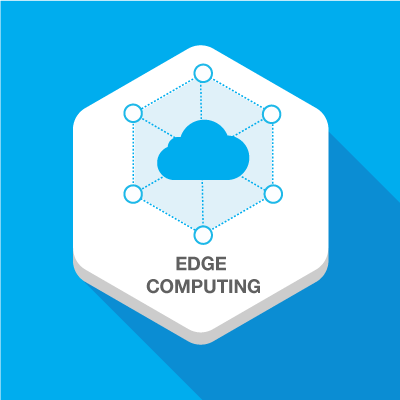The Internet of Things makes edge computing important again. But what exactly does the term mean exactly?

The further development of the Internet and our handling of it also means that topics that are not new at all are being discussed again. This also applies to the term "edge computing." Already in the late nineties, Akamai's Content Delivery Networks took the first steps in this direction, for example, to be able to deliver advertising locally. The principle of that time is the basic idea of edge computing. In 2014 Cisco re-addressed this technology under the term " fog computing," while IBM and Microsoft continue to talk about edge computing and thus describe the same ideas.
To imagine what edge computing means, you first have to look at network architecture. The typical model setup of a network provides a single data center in the middle as a central point. Edges, on the other hand, are the points where data enters this network. The edges then send that data directly to the data center, which of course requires bandwidth and latencies before the results are available. A recent example of this architecture is cloud computing, where the cloud is the center to which all data is sent.
Edge computing is changing the common network architecture.
In contrast, edge computing relies on decentralized data analysis. This can be seen as an extension of the network architecture, so there is certainly still a large data center in the network. There are various approaches to implementing edge computing. One is to make the sensors themselves sufficiently intelligent so that they can evaluate the time-critical data themselves and only forward the data center to the data center, which, for example, should be archived or used for big-data analysis. Another variant is to provide several small data centers at different points and as close to the edges as possible, which shortens the transmission path. Also, not all data is forwarded unfiltered, but only those for which a forwarding makes sense.
With the advent of the Internet of Things, more and more devices are now networked together. Common to the smartphone, fitness tracker, refrigerator, parking guidance system and intelligent thermostat, they are equipped with sensors and collect data that needs to be processed. In practice, in all of these examples, however, the slight delays due to sending the data are acceptable, as decisions are never made in real time. Edge computing is not necessarily an advantage.
Edge computing is not a universal solution.
The situation is different in Industry 4.0, where, for example, robots in production always have to know exactly how the current situation is to be tackled. A perhaps even better example is self-driving cars. In this case, decisions have to be made in fractions of seconds in emergency situations, so data processing must be as fast as possible. This is where the advantage of faster data transfer of edge computing comes into play.
Several computing units continue to argue for better scalability, as new computational units can be added or removed from the network at any time. On the other hand, this can be problematic if the data volumes are very irregular and therefore the actually required capacities have to be readjusted, or the fluctuations are not included. It is also an advantage of decentralization that the stability in terms of so-called DDoS attacks increases because then they can not concentrate on the one data center and can paralyze. Depending on the network structure, the failure of a single data center is less or not significant at all.
Also, data passes through multiple hubs on the way to the center, where threats such as viruses can be detected and erased before they reach the data center. But, of course, multiple data centers and more numerous devices mean that there's a greater hassle of keeping all points secure. Thus, in the worst case, the single unit can be attacked more easily if, for example, the same security precautions could not be taken everywhere or security updates are recorded at different speeds.
I invite you to come and give him a look More info| my purpose @thetanvirhasan
Congratulations @thetanvirhasan! You have completed some achievement on Steemit and have been rewarded with new badge(s) :
Click on any badge to view your own Board of Honor on SteemitBoard.
For more information about SteemitBoard, click here
If you no longer want to receive notifications, reply to this comment with the word
STOP